
- Shandong Loyal Industrial Co.,Ltd.
- Macaroni Production Machine Instant Noodle Machine Biscuit Making Machine
Home> Processing> Unlock The Secrets Of Efficient pet food production line Manufacturing

Unlock The Secrets Of Efficient pet food production line Manufacturing
2025-05-15 16:27:19If you want to know more story about LOYAL brand, here can help you - https://www.facebook.com/foodmachineloyal
Analysis of global pet ownership trends and driving factors
1.Social Structure Transformation: Emotional Needs and Reconfiguration of Family Roles
The rise of single-person households and aging populations is driving trends: the number of singles worldwide continues to grow (for example, China has 240 million singles), with young singles and elderly empty nesters turning to pets for emotional support. In the United States, 70% of households own pets, and 64% of dog owners believe that their pet's happiness is more important than their own. Pets have become 'family members' that help alleviate loneliness.
People aged 25-34 have become the main force in pet ownership, with an average annual pet expenditure of $6,103, significantly higher than other groups, driving growth in high-end and personalized needs.
Human-pet relationships have evolved: pets have transitioned from 'functional animals' to 'digital family members,' with anthropomorphism becoming more pronounced. For instance, 43% of pets in the UK have dedicated seats on the sofa, and 31% can eat at the dining table; the penetration rate of 'emotional consumption' such as pet birthday parties, custom clothing, and spa services is increasing year by year.
2.Regional market characteristics: differentiation between mature and emerging markets
Mature markets (North America, Europe): North America: Holds 50% of the global pet market share, with consumption trending towards high-end and smart products. By 2024, sales of smart cat litter boxes in the US and Asia exceeded 600 million yuan, with Chinese brands Petkit and Catlink entering the top 10 due to their health monitoring features, averaging 1800 yuan each. Europe: Focuses on environmental protection and pet welfare, with demand for biodegradable cat litter and plant-based food increasing by 120%. In Germany, pet ownership penetration is 36%, and pet-friendly policies (such as allowing pets on public transportation) promote service diversification.
Emerging markets (Southeast Asia, Latin America): Southeast Asia: The online pet market is growing by over 50%, with cat food making up 56% of sales in Thailand. Local brand Kaniva has stood out through music marketing. In the Philippines, there's a preference for high-value-for-money products, and Chinese brand Petsup has achieved over 20 million yuan in annual GMV with sodium-based mineral cat litter. Latin America: Pet ownership rates are rapidly increasing in Brazil and Mexico, driving strong demand for budget-friendly main foods. The rise in e-commerce penetration is encouraging cross-border brands to expand their presence.
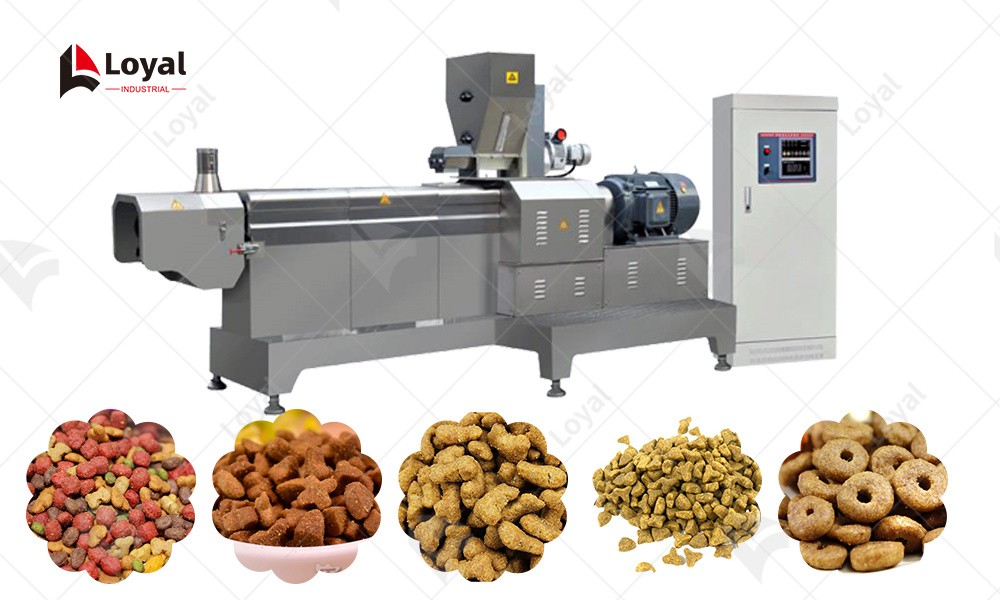
The current thriving state of the pet economy
1.Market Size and Growth Engine: The Leap from Trillions to Quadrillions
Comparison of global and domestic market sizes:
The global pet economy market size is expected to exceed $500 billion in 2024, with North America and Europe together accounting for over 60%, remaining the core mature markets. As a leading emerging market, China's urban pet (dogs and cats) consumption market size is projected to reach 300.2 billion yuan in 2024, growing by 7.5% year-on-year, and is expected to surpass 330 billion yuan in 2025, potentially reaching 1.15 trillion yuan by 2028, with a compound annual growth rate exceeding 15%.
Market segment contributions:
◦ Pet food: Accounts for 52.8% of the overall market, expected to reach 152 billion yuan by 2024, with high-end main food (over 50 yuan/kg) accounting for 28%, and freeze-dried and baked food penetration increasing by 30%.
◦ Pet healthcare: Accounts for 28%, with an average annual medical expenditure of 1,000 to 1,500 yuan per pet, and the chain rate of specialized hospitals exceeding 40%, with AI diagnosis error rate decreasing by 53%.
◦ Pet products and services: Products account for 12.4% of the market, with smart devices (such as feeders and litter boxes) expected to reach 48.4 billion yuan by 2025; services account for 6.8%, with emerging services like pet travel and funeral services growing over 40%.

Analysis of pet food production line
In recent years, China's pet food market has seen explosive growth, gaining significant domestic and global market share due to its high cost-effectiveness and improving quality. Statistics indicate that China has become a leading producer and exporter of pet food, particularly in dry food, snacks, and functional pet foods. These colorful, flavorful snacks not only appeal to pets' tastes but also provide essential vitamins and minerals for their health. In the competitive market, what sets some Chinese brands apart and ensures their long-term popularity? The answer lies in their production process, from raw materials to finished products.
In the past, the international market had biases against Chinese-made pet food, perceiving it as inconsistent in quality. But now, with advancements in manufacturing processes and improved regulatory systems, many Chinese pet food companies have obtained international certifications (such as CE, ISO), exporting their products to Europe, America, Southeast Asia, and other regions. This transformation is due to stringent controls in raw material selection, production processes, and quality inspections, along with precise market insights. For example, some companies use high-quality raw materials directly supplied by organic farms, ensuring each batch of feed meets the highest standards. Additionally, advanced equipment and automated pet food production lines make the process more efficient and controllable. These efforts not only enhance product quality but also boost consumer trust in the brand.
Modern industrial pet food production lines utilize highly automated processes, from raw material mixing to finished product packaging, with each stage precisely controlled to ensure the final product is nutritionally balanced, safe, and reliable.
The production process begins with the mixing stage, where various raw materials, rigorously selected, are added to large twin-shaft paddle mixers according to scientific ratios. This mixing equipment features a unique stirring design that can uniformly mix protein ingredients, grains, and vitamin premixes within 3-5 minutes, achieving a mixing uniformity of over 95%, ensuring that each pellet contains balanced nutritional components. The mixed raw materials are then smoothly conveyed to the next stage via closed-spiral conveyors, which effectively prevent cross-contamination during transportation. Metal detection and magnetic separation devices are also installed during conveyance to promptly remove any potential metal impurities. Subsequently, the raw materials enter the core twin-screw extrusion puffing system, where they undergo high-temperature and high-pressure physical and chemical changes. The extruder barrel is divided into multiple temperature-controlled zones, with precise adjustments made to temperature (90-150℃), pressure (20-40 bar), and screw speed to fully gelatinize starch and moderately denature proteins, ultimately forming porous structured pellets. This stage directly determines the digestibility and palatability of the feed.
The semi-finished product, after being puffed, is conveyed into a multi-layer belt dryer by a bucket elevator for drying. The drying process uses segmented temperature control technology, with high temperatures initially to quickly remove moisture, followed by low temperatures to slowly dry the material, reducing the moisture content from 25-30% to 8-10%. A specially designed air circulation system ensures that hot air evenly penetrates the material layer, preventing areas from becoming too dry or too moist. Next, the product enters a countercurrent cooling tower, where room temperature air is blown upward from the bottom by cooling fans, creating a countercurrent heat exchange with the falling hot particles. This design not only enhances cooling efficiency but also effectively reduces product breakage.
After cooling, the product is once again conveyed by the elevator to the seasoning process, where it is evenly sprayed with specially formulated flavor oils or nutrient solutions using an oil sprayer. This equipment uses a high-pressure atomization system combined with a spiral mixing device, ensuring that each particle of feed is coated uniformly. The high-pressure atomization system breaks down the oils and solutions into fine mist droplets, which seamlessly adhere to the feed particles. The spiral mixing device then gently tumbles and rotates the feed, ensuring an even and thorough coating. This meticulous process enhances palatability, making the feed more appealing to animals, while also supplementing essential fatty acids crucial for their overall health and nutrition. The aroma of the freshly sprayed flavors wafts through the air, creating a tantalizing scent that hints at the enhanced nutritional benefits awaiting the consumers.
Finally, the finished product enters an automated packaging production line. Advanced electronic quantitative packers use combination scales for measurement, achieving precision up to ±1 gram. The packaging process is carried out in a clean environment, automatically completing tasks such as bag making, filling, vacuum sealing, nitrogen flushing for freshness preservation, and sealing. The entire production process, from raw materials to finished products, takes about 2-3 hours, with the central control system monitoring the whole process to ensure that each process parameter strictly meets quality standards, ultimately producing high-quality pet food that is nutritionally balanced, safe, and reliable.

Advantages of intelligent equipment:
Cutting-edge technology creates outstanding quality. Chinese pet food production equipment has achieved global competitiveness in precision, efficiency, and intelligence through continuous technological innovation. Modern production lines, equipped with state-of-the-art sensors and automated systems, integrate multiple core technological advantages, providing hardware assurance for product quality. These advanced machines ensure meticulous control over every stage of production, from the precise measurement and blending of high-quality ingredients to the seamless packaging process, guaranteeing consistency and safety. The sleek, stainless steel machinery operates with minimal human intervention, reducing the risk of contamination and enhancing hygiene standards. This sophisticated infrastructure not only boosts productivity but also ensures that each batch of pet food meets stringent quality benchmarks, catering to the diverse nutritional needs of pets worldwide. The automated systems emit a soft hum as they work seamlessly, while the clean, bright factory environment exudes a sense of modernity and reliability, reassuring consumers of the highest standards maintained throughout the production process.
|
Advantages |
High-precision hybrid system:During operation, the high-precision mixing system can monitor parameters such as temperature, pressure, and viscosity in real-time to ensure the quality and consistency of the mixture. |
|
Smart Extrusion Control System:The system can monitor the temperature, pressure, and flow of materials in real-time, ensuring consistent and stable product quality. The intelligent extrusion control system also has self-diagnostic capabilities, enabling it to promptly identify and resolve potential issues, thereby improving production efficiency. |
|
|
Three-dimensional drying technology: By heating and evaporating materials within three-dimensional space, rapid and uniform drying effects are achieved. Additionally, this technology effectively prevents surface hardening of the material, ensuring that internal moisture is fully expelled, thereby enhancing drying efficiency and product quality. |
|
|
Fully automatic packaging production line: Capable of automatically completing a series of packaging processes, including product conveyance, measurement, sealing, and label printing. |
|
|
Digital management platform: It integrates functions such as data analysis, real-time monitoring, automated operations, and intelligent decision support |
The extrusion puffing machine is the most critical machine in the entire production line. The advanced extrusion-expansion system is equipped with multi-stage temperature control capabilities, automatically adjusting process parameters based on the characteristics of the raw materials. The intelligent temperature management ensures that starch is fully gelatinized while preventing high temperatures from degrading heat-sensitive nutrients, resulting in a product that has both excellent texture and nutritional value. The system's precision temperature control allows for the gradual heating of the raw materials, ensuring that each stage of the process is optimized for maximum efficiency and quality. The initial stage gently warms the ingredients, activating the starch granules without compromising their integrity. As the material progresses through subsequent stages, the temperature is carefully increased to achieve optimal gelatinization, creating a smooth and consistent texture. Meanwhile, the system's sophisticated sensors monitor the entire process, making real-time adjustments to maintain the ideal thermal conditions. This meticulous approach preserves the delicate balance of nutrients, including essential vitamins and minerals, which might otherwise be lost at higher temperatures. The end result is a product that not only boasts superior mouthfeel and structural integrity but also retains its full spectrum of nutritional benefits, making it an ideal choice for health-conscious consumers.

Reference
The following are five authoritative foreign literature websites in the field of Industrial food machinery:
1. Food Engineering Magazine
Website: https://www.foodengineeringmag.com/
2.Food Processing Magazine
Website: https://www.foodprocessing.com/
3.Journal of Food Engineering
Website:https://www.journals.elsevier.com/journal-of-food-engineering
4. Food Manufacturing Magazine
Website:https://www.foodmanufacturing.com/
5. International Journal of Food Science & Technology
Website:https://onlinelibrary.wiley.com/
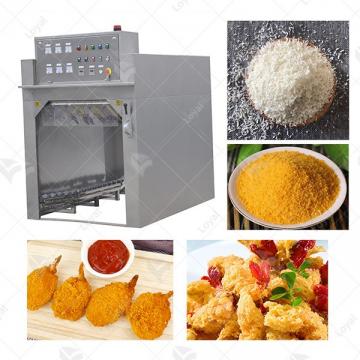 Commercial Japanese Panko Bread Crumb Grinder Machine
Commercial Japanese Panko Bread Crumb Grinder Machine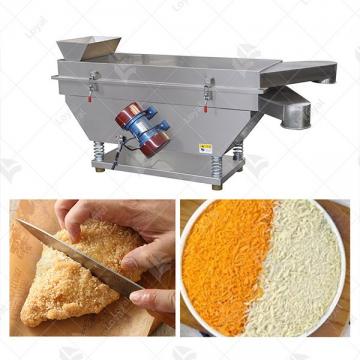 Japanese Bread Crumbs Processing Line
Japanese Bread Crumbs Processing Line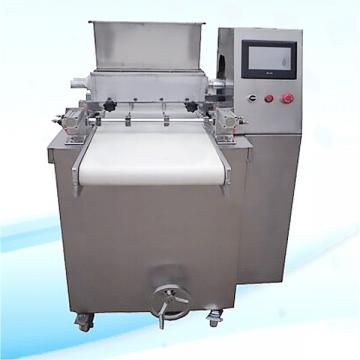 Automatic Cookies Making Machines
Automatic Cookies Making Machines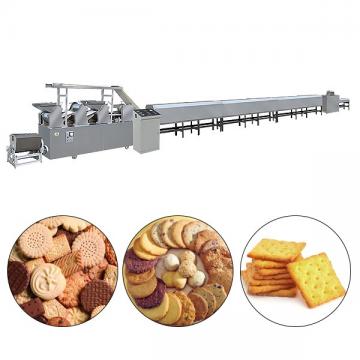 Fully Automatic Biscuit Making Machines
Fully Automatic Biscuit Making Machines